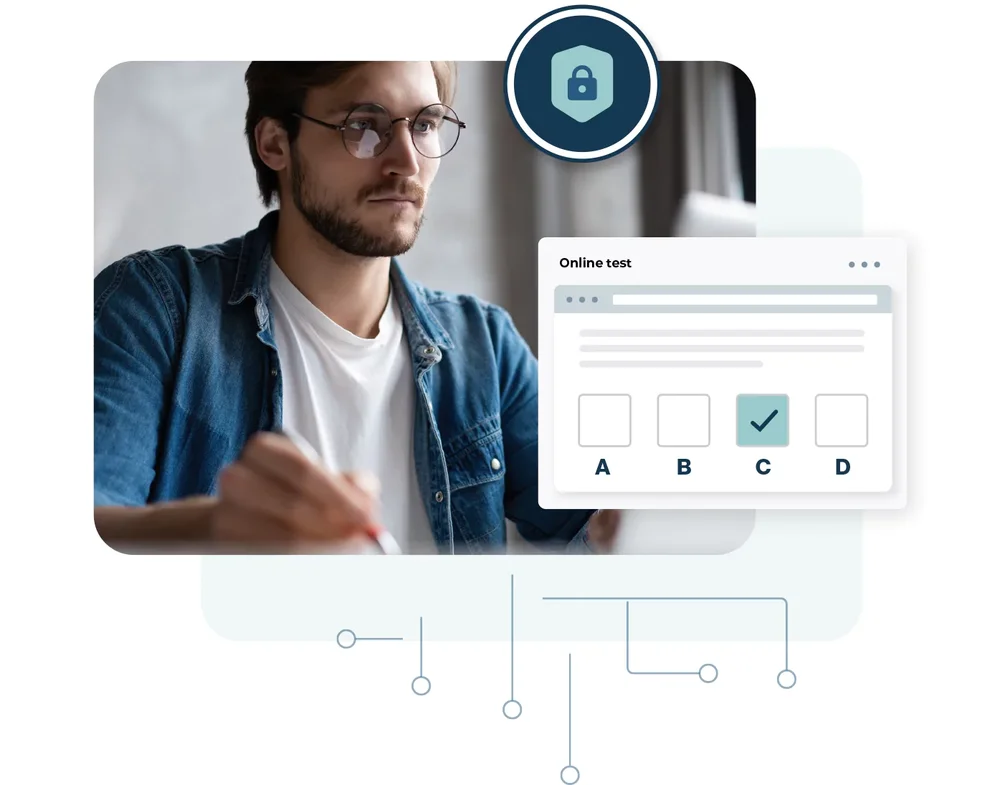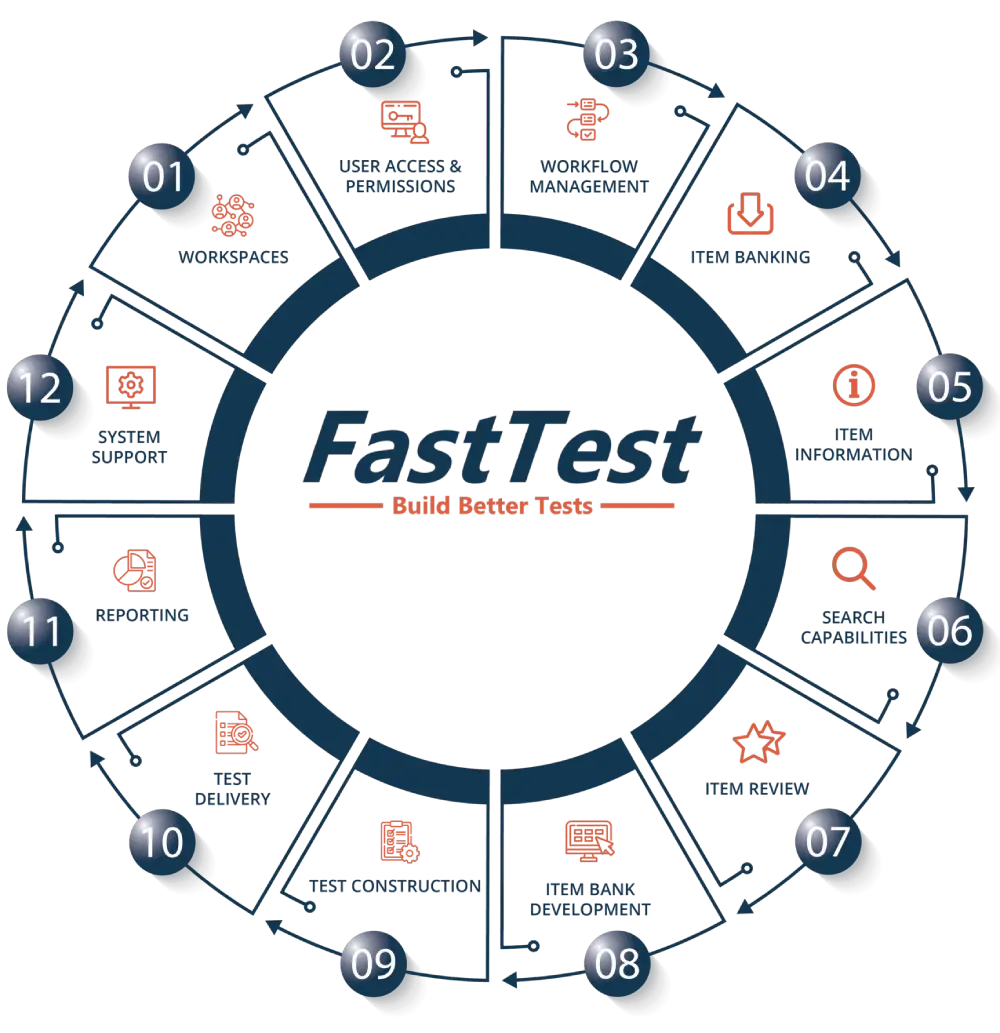
Test Delivery: Scalable, Configurable, and Secure
Deliver your tests flexibly on paper, unproctored, remote-proctored, or at test centers. Maintain security and implement modern psychometrics like IRT and CAT.
An end-to-end, professional online testing ecosystem to develop, deliver, and analyze – all in one place!
Our test delivery platform is designed to manage the entire assessment cycle, with functionality for best practices like item response theory and modified-Angoff studies. Our powerful deliver engine is designed for high-quality exams, with adaptive/multistage testing, IRT scoring, randomization, complex item types, and secure administration.

Secure
Lockdown browser, remote proctoring, examinee passwords, date/time windows, proctor codes, and more

Best Practices
Designed by PhD psychometricians, we support industry standards like APA/AERA/NCME, NCCA, ANSI, and ITC.

Reliable
We’ve delivered millions of secure, psychometrically-sound online tests.

Configurable
Customize your navigation, scoring, reporting, messaging, security… it’s your program!
Multi-Modal test delivery allows you to support all types of exams
Our online testing platform empowers you to configure and manage your assessments in nearly endless ways. This is idea for organizations that might have different types of assessments, like certifications, certificates, and practice tests. Or, trust us to publish and manage the exams for you!
Online Unproctored
You can easily configure your exam delivery, from low stakes to high stakes.
- 60+ item types and formats
- Test sections and navigation controls
- Time limits
- Testlets, multimedia, and passages
- Multi-test batteries
- Date and time limits
- Multiple languages
- Lockdown browser
- Much, much more!

Online Proctored
We work with some of the best proctoring companies in the business to keep your exams secure and ensure a seamless candidate experience.
- Live: A real human checks in all candidates and watches them at all times, with a 1:6 ratio or lower. Option for 2 video streams (webcam and phone/room).
- Record and review: We record the video and one of our trained human proctors watches it later.
- AI: The video is recorded and AI will flag issues like having two faces, or no faces, in the screen. You can then evaluate these.

Paper and Pencil
- Export your tests to PDF, Excel, Word, or XML for Adobe InDesign.
- Format those files and print, then deliver your tests.
- If you use bubble sheets, run them through your scanner; you can then upload the resulting spreadsheet into our platform for scoring and reporting.

Proctored Test Centers
Utilize our network of proctored testing centers for high-stakes exams like certification. We can take candidate registrations and payment, then coordinate exam delivery at the centers. Moreover, you can still deliver some candidates with remote proctoring or at your locations for more convenience.

Your Centers or Conference
Our platform includes functionality to manage your own testing sites and deliver exams securely. For example, you can require a Proctor Code, which means that the examinee needs to type in their password and the proctor also needs to type one in, before the test can start.
This can be used at formal locations such as schools or company training centers, or at situations like an annual conference where you set up some laptops in a room as a pop-up testing center.

Improve your test delivery with modern psychometrics
Psychometrics is the science of assessment, and ASC is one of the leaders. We will help you implement best practices, from the job task analysis study to design the test blueprints, to the end-of-year statistical report to document the validity of the test. While also available as consulting services, much of this is baked into our online testing platform, giving you the power to implement yourself.
Computerized Adaptive Testing
Easily publish tests which personalize the assessment for every student, using IRT

Get in touch for a demo or free trial account!
Request a Consultation




